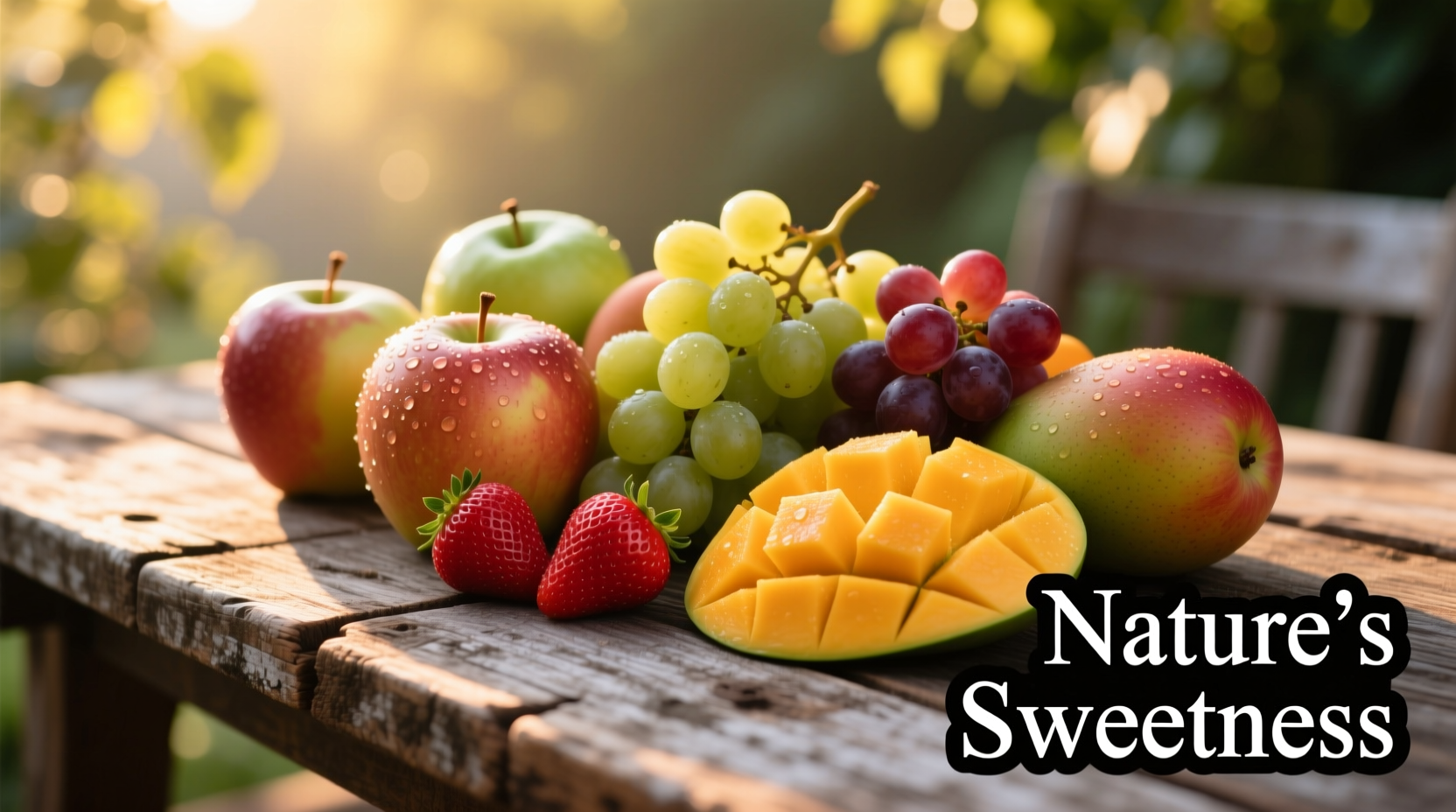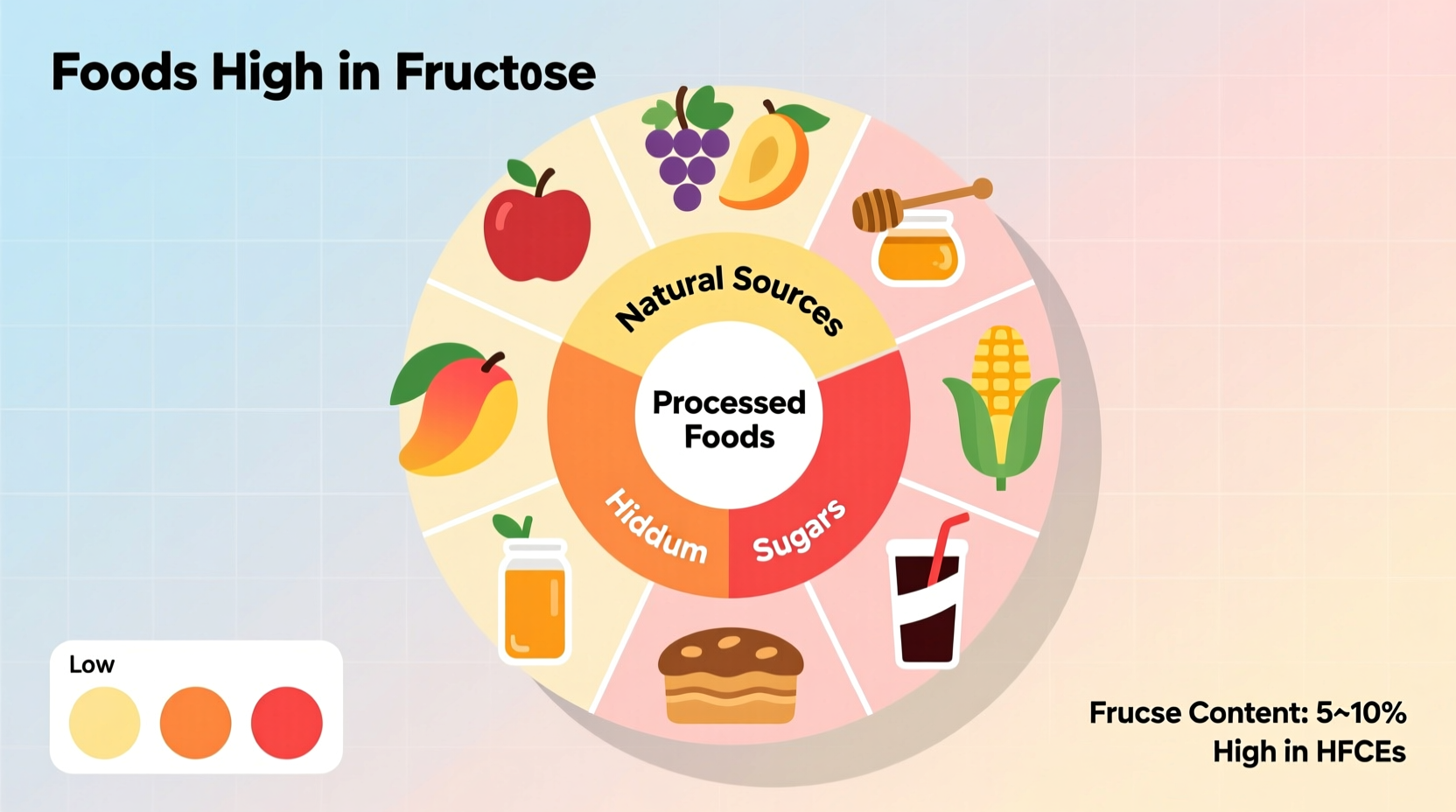When searching for what foods have fructose, you need clear, science-backed information to make informed dietary choices. Fructose occurs naturally in many fruits and some vegetables, but also appears as an added sweetener in countless processed products. This comprehensive guide identifies both natural and added fructose sources with precise measurements from authoritative nutritional databases.
Understanding Fructose: Natural vs. Added Sources
Fructose is a simple sugar naturally present in many plant-based foods. Unlike glucose, which affects blood sugar directly, fructose metabolizes differently in the liver. The distinction between natural fructose (found in whole foods with fiber and nutrients) and added fructose (stripped of beneficial compounds) matters significantly for health outcomes.
Natural fructose comes with vitamins, minerals, and fiber that slow absorption. Added fructose—often as high-fructose corn syrup (HFCS)—lacks these protective elements. The American Journal of Clinical Nutrition notes that excessive added fructose consumption correlates with metabolic issues, while fruit-derived fructose shows neutral or positive effects when consumed in whole-food form.

Fruits With Highest Natural Fructose Content
Fruits represent the primary natural source of fructose. The USDA FoodData Central database provides precise measurements of fructose content per 100g serving. These values help identify which fruits contribute most significantly to daily fructose intake.
| Fruit | Fructose (g/100g) | Natural Sugar Ratio |
|---|---|---|
| Apples | 5.9 | Fructose:Glucose = 1.3:1 |
| Pears | 6.5 | Fructose:Glucose = 2.3:1 |
| Mangoes | 3.2 | Fructose:Glucose = 1.1:1 |
| Watermelon | 3.4 | Fructose:Glucose = 1.0:1 |
| Grapes | 4.0 | Fructose:Glucose = 1.1:1 |
This USDA FoodData Central comparison reveals why certain fruits like pears and apples affect people with fructose malabsorption more severely—their higher fructose-to-glucose ratio makes absorption more difficult. Those managing fructose intake should prioritize fruits with balanced fructose-glucose ratios like bananas (1:1) and citrus fruits.
Vegetables Containing Fructose
While less concentrated than in fruits, several vegetables contain notable fructose levels:
- Asparagus (1.2g/100g)
- Artichokes (1.4g/100g)
- Onions (2.7g/100g)
- Peas (1.4g/100g)
The Harvard T.H. Chan School of Public Health explains that vegetable-based fructose generally poses fewer concerns due to lower concentrations and higher fiber content, which moderates absorption.
Processed Foods With Added Fructose
Manufacturers add fructose primarily as high-fructose corn syrup (HFCS), which typically contains 42% or 55% fructose. Common sources include:
- Sodas and sweetened beverages (up to 10.7g fructose per 100ml)
- Breakfast cereals (especially fruit-flavored varieties)
- Yogurts with added sweeteners
- Commercial baked goods
- Condiments like ketchup and barbecue sauce
Reading ingredient labels is essential—terms like "agave nectar" (85% fructose), "honey" (40% fructose), and "fruit juice concentrate" often mask significant fructose content. The FDA's nutrition guidelines now require "added sugars" disclosure, making identification easier.
Contextual Considerations for Fructose Consumption
Fructose becomes problematic primarily in these scenarios:
- Fructose malabsorption: Affects 30-40% of people globally, causing digestive distress from excess fructose
- High-fructose corn syrup consumption: Exceeding 25g daily of added fructose correlates with metabolic issues per CDC dietary surveys
- Whole fruit vs. juice: Juicing removes fiber, accelerating fructose absorption
For most people, moderate fruit consumption provides beneficial nutrients without adverse effects. The Mayo Clinic recommends focusing on whole fruits rather than juices or sweetened products when managing fructose intake.
Practical Tips for Managing Fructose Intake
Use these evidence-based strategies to navigate fructose in your diet:
- Read labels carefully: Look for "high-fructose corn syrup," "agave," "honey," and "fruit juice concentrate"
- Choose balanced fruits: Opt for lower-fructose options like berries, citrus, and bananas if sensitive
- Limit processed foods: 74% of packaged foods contain added sugars according to JAMA Internal Medicine research
- Monitor portions: Even healthy fruits contribute to total fructose load in large quantities
Understanding natural sources of fructose in foods versus added forms empowers smarter dietary decisions. Those with fructose intolerance should work with a registered dietitian to develop a personalized eating plan that maintains nutritional adequacy while minimizing symptoms.











 浙公网安备
33010002000092号
浙公网安备
33010002000092号 浙B2-20120091-4
浙B2-20120091-4